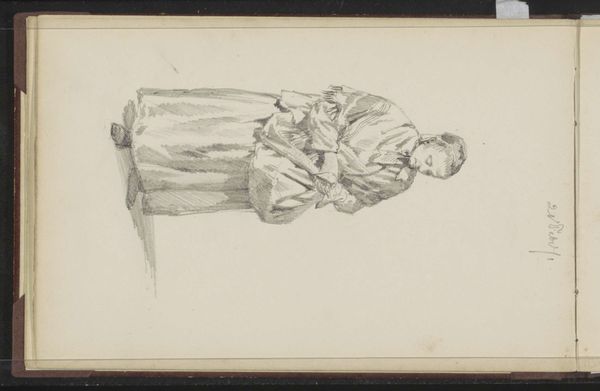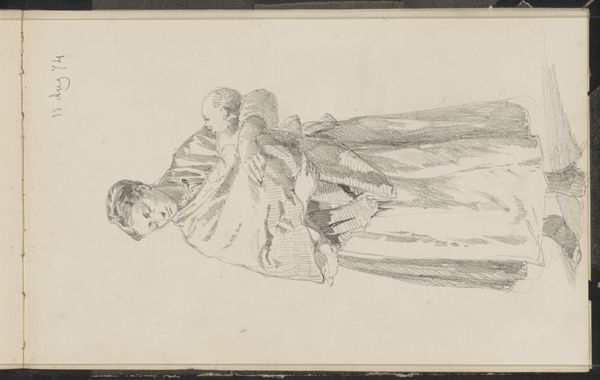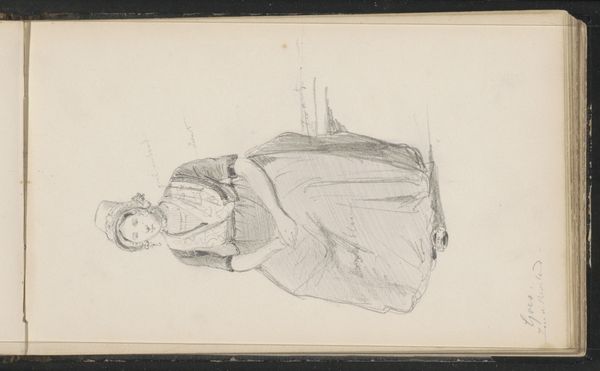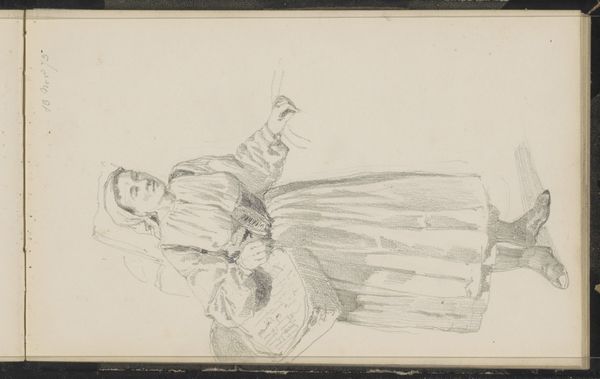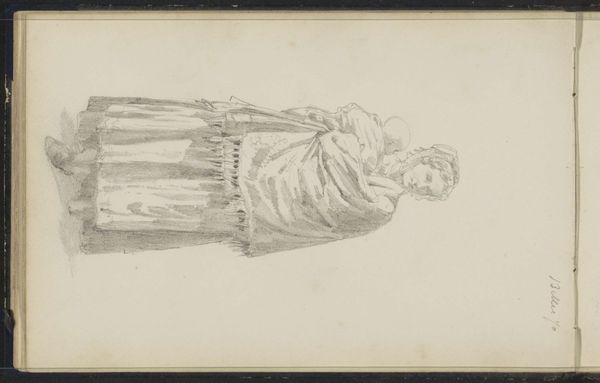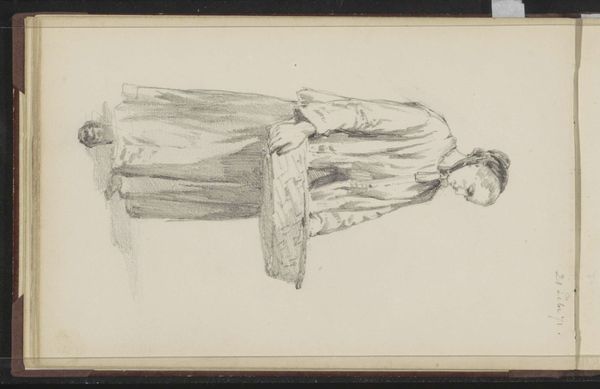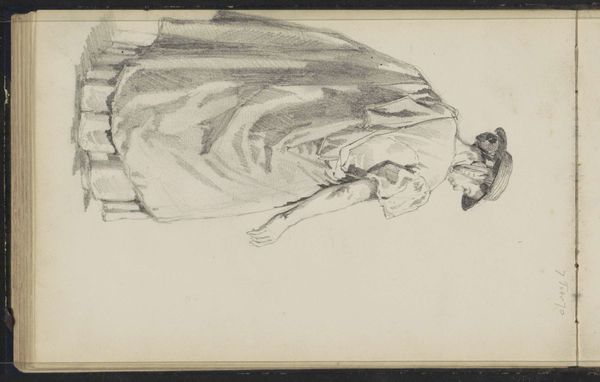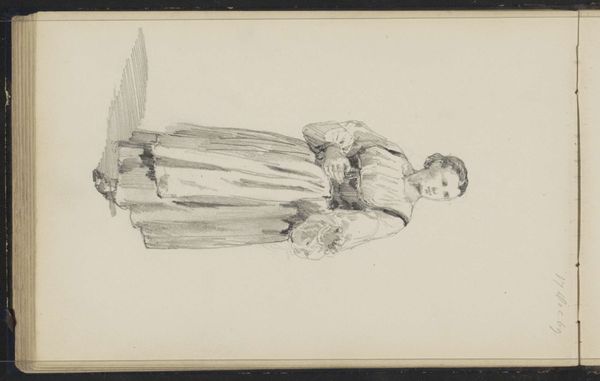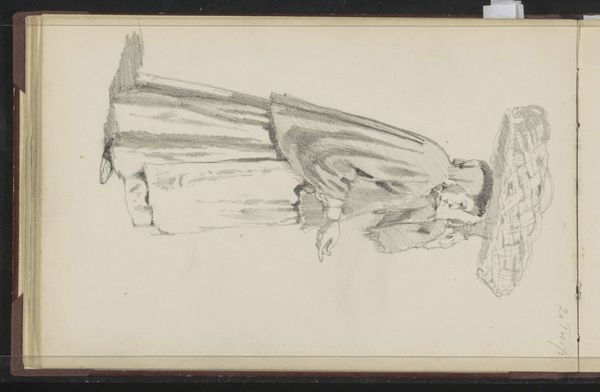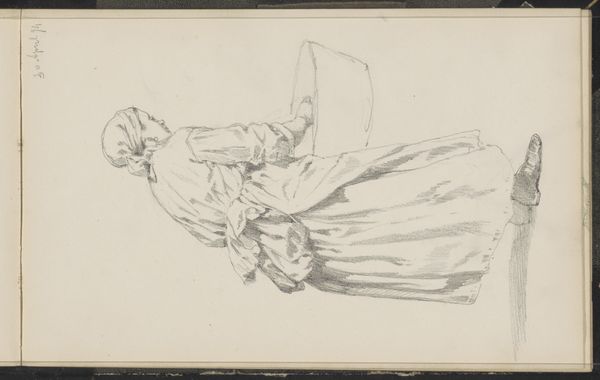
drawing, paper, pencil
#
portrait
#
drawing
#
figuration
#
paper
#
pencil
#
genre-painting
#
northern-renaissance
#
realism
Copyright: Rijks Museum: Open Domain
Editor: So, this is Cornelis Springer's "Vrouw in klederdracht met een kind op de arm," possibly from 1873. It's a pencil drawing on paper and really gives off this gentle, quiet mood. What stands out to you? Curator: It's interesting how the woman's clothing immediately reads as both familiar and distant, carrying echoes of Dutch Golden Age portraiture and a more immediate, observed reality. Have you considered how clothing operates as a symbol of identity and social status here? Editor: That’s a great point. I was mainly thinking about the intimacy of the pose, but you’re right, the traditional clothing complicates things. What do you mean? Curator: Think about the persistent visual language surrounding motherhood – across cultures and eras. Does this image challenge or reinforce traditional notions of women and family? The clothing root it in a time and place, yet the connection seems timeless. Editor: I guess I hadn't thought about how loaded even simple portraits can be. It seemed very straightforward, but you’re showing that there’s more there. Curator: Indeed. The seeming simplicity is deceptive. Consider how the softness of the pencil contributes. It evokes tenderness and care. Does this visual tenderness amplify our perception of motherhood as gentle? Or does it perhaps veil something more complex? What do you think Springer might have been trying to say about the relationship between women, tradition, and society in this era? Editor: I'm now wondering if he's intentionally playing with those traditional symbols to make a statement. I learned a lot. Thanks! Curator: My pleasure! It's these lingering visual echoes that make the image stick with you.
Comments
No comments
Be the first to comment and join the conversation on the ultimate creative platform.
